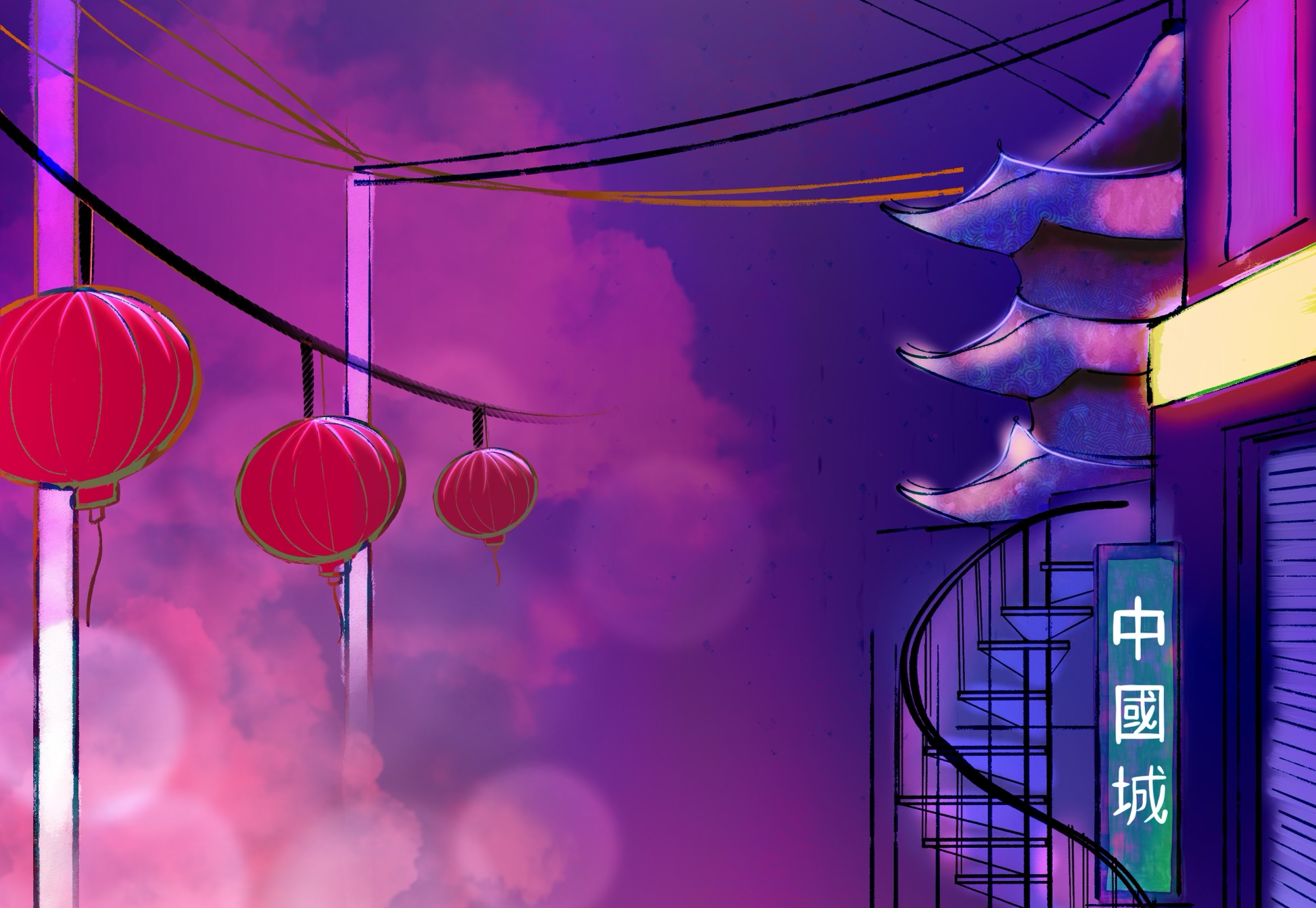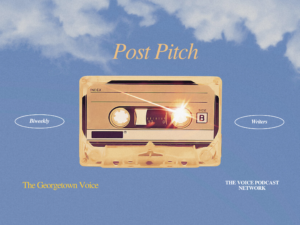Between Fifth and Eighth streets and along H and I streets lies what remains of D.C.’s Chinatown. The Friendship Arch, which was built in the style of Qing-dynasty architecture, marks the entrance to the historical neighborhood. The archway evokes a splendor that showcases the vibrancy of traditional Chinese culture, a liveliness that is no longer reflected in the neighborhood that lies beyond it.
D.C.’s first Chinese community found its home in Little China between Second and Fourth streets on Pennsylvania Avenue in the 1900s, until Congress forcibly pushed residents out in the 1920s to create space for the National Mall as part of the 1902 McMillan Plan. Residents moved north in the 1930s, establishing the Chinatown of today.
As anti-Asian discrimination and xenophobia arose in the 1900s following the 1882 Chinese Exclusion Act, Chinatowns across the U.S. played a vital role in helping newly arrived families find their footing, often providing a residential hub for Chinese American residents to feel safe and to foster community. The Chinese Consolidated Benevolent Association of D.C. (CCBA), established in 1939, was among several organizations that worked to help immigrants adjust to language differences, find housing, and obtain social security cards. By the 1940s, Chinatown’s streets had filled with Chinese restaurants, grocery stores, and residents.
“Chinatowns in general were formed as safe havens for Chinese immigrants,” Jack Lee, first vice chair of the CCBA, said. “Back during those times, there was not a network outside of the Chinese community that could help new immigrants.”
Today, Lee notes that most of Chinatown’s remaining Chinese residents, many of whom are elderly, live in the historical Wah Luck House, one of the last affordable housing communities that remain in Chinatown. The building was originally built in 1982 by the District government for Chinese immigrants displaced by surrounding construction projects.
As a result, present-day Chinatown looks like a shadow of its former self. The rise of new infrastructure and buildings projects has been a bellowing force in the displacement of Chinese residents and their businesses. The 1997 opening of the MCI Center, now the Capital One Arena and Georgetown men’s basketball’s longtime home court, notably molded the neighborhood as Chinese businesses and residential buildings became replaced with chain establishments. As gentrification took hold of Chinatown, it became less a hub for the Chinese American community and more a tourist destination.
“A lot of [the businesses] did rent space and rent went up, and of course the taxes went up. And then the small businesses—the mom and pop grocery stores, the food stores, the herbal stores—have moved out. The newer generations of immigrants that came in couldn’t afford to stay there,” Stan Lou, the Talk Story Director of the 1882 Foundation, an organization focused on sharing Chinese American history and narratives, said.
In recent years, Chinatown has become increasingly dilapidated. Anti-Asian sentiment, repeated lockdowns, and the interruption of tourism during the pandemic has done significant damage to the neighborhood’s economic well-being. Lockdown policies in particular depleted restaurants of their once-steady stream of customers of Chinese tourists and international students. As a result, Chinatown has struggled to bounce back from the pandemic, causing local businesses and even well-established franchises to permanently close their doors.
“Seventh Street now is empty. I would say 80 percent of storefronts are vacant or being leased. And to me—this is the one thing I always say—where in the world, in any city, has a McDonald’s and a Starbucks failed?” Penny Lee, the public relations officer of the CCBA, said. “Yet in D.C.’s Chinatown now, both of those are gone.”
When asked about the reason for Chinatown’s decay, several organizers pointed to lack of institutional support and financial burden.
“Restaurant owners who need to renovate their restaurants to make it better or improve it, like change the sign or change the carpet, they don’t have enough. They can’t get a loan or they don’t, and their tax bills are high because the land property is high. Our businesses don’t have a tax break. The people that own the businesses and live there are not rich. The D.C. government has never given Chinatown any incentive for us to stay, for us to rebuild,” Lee said.
Chinatown’s deterioration drives away residents, diminishing councilmembers’ incentive to work on rectifying its problems as its constituency base shrinks, creating a toxic cycle. “You gotta have a seat at the table, and we don’t have a seat. Most of the time, most of the council people, or the mayor’s people, aren’t really going to give [the Chinese residents of Chinatown] too much time,” Lee said.
“If you look at the successful Chinatowns, and we look at Chicago as one of them, they have a seat at the political table. That’s just another catch-22, because the residents move out, so your voting bloc is very small. And so they’re gonna say, why am I worried about 300 votes or 200 votes or whatever? It just doesn’t help,” Lee said.
In the face of Chinatown’s modern dilapidation, Chinese community groups and organizations have taken it upon themselves to preserve the essence of the historical neighborhood, and maintain its presence within D.C. as a hub for Chinese culture, like the CCBA’s efforts to improve housing in the area, and beautify a park local to Chinatown.
“There are grants to preserve some of the historical buildings in Chinatown. And part of those grants are not just to preserve the physical building, but also to make it available for the Chinese community and organizations to continue to use and to bring people in,” David Uy, executive director of the Chinese American Museum, said.
Restoring Chinatown to its former glory as a bustling community hub is a perpetual goal of many within D.C. Chinese community and Chinese American organizations. But each year, the number of Chinatowns is dwindling. More residents and newer generations leave the historic neighborhood, and more of what once made Chinatown the residential center it was becomes a figment of the past.
“Do second generation or third generation, maybe even fourth generation in D.C. want to carry on their parents’ business?” Uy asked. “I think that is also causing a shift out of Chinatown, which is not necessarily an outside force pushing them out. It’s just, you know, changing needs of the population.”
The modern changes to Chinatown’s demographics and character aren’t all propelled by economic barriers, government policy, or the negative effects of COVID-19. Some may be attributable to broader, positive evolutions of security within the D.C. Chinese.
“My father is a Chinese immigrant. You know, he came to this country, he had to kind of assimilate,” Uy said. “We lived in Queens. There’s a pretty big Asian community there. I’m sure that was of some comfort to him, but you know, as second generation Chinese, you don’t necessarily feel that need, the security of living in a Chinatown.”
Chinatown began as a protective enclave for Chinese residents, but the neighborhood is no longer solely a protective space. Designed to protect the Chinese community from the discrimination and alienation codified in the 1882 Chinese Exclusion Act, the nature of community-building and protection is no longer constrained to one neighborhood. The neighborhood isn’t the only physical community for the Chinese community anymore—many Chinese Americans have relocated and continued thriving in suburban areas of Maryland and Virginia, although many still hold the Chinatown of D.C. as a unique historic and cultural center.
Chinatown is the geographic manifestation of Chinese community, memory, and history in D.C.—the area’s physical degradation hasn’t diminished its significance or legacy. It may no longer be as prominent a residential enclave as it was in the 1900s, but to many organizations and community members, the area’s symbolic nature still stands.
“There’s some people that will say to me, ‘Oh, D.C. Chinatown’s dead,’” Uy said. “We want people to pause and just rethink that notion that Chinatown is gone; Chinatown is dead. It can still very well be a cultural center. It could still be a landmark that represents the Chinese American history.”
As a nexus of Chinese American culture, the nine-block Chinatown now shares Chinese heritage with not only the Chinese community of D.C. but those beyond as well. Cultural events, such as CCBA festivals celebrating Chinese cultural holidays and the Lunar New Year parade, aim to make Chinatown a true center for education on Chinese American heritage.
The Chinese Youth Club (CYC), a prominent branch of CCBA, continues to foster community in new generations of Chinese Americans by hosting sporting events. Most notably, nine-man, a style of volleyball that features nine players per side and a slightly larger court, remains popular. Since the 1882 Chinese Exclusion Act, the sport had been played by Chinese Americans to unite Chinatown communities across the country and forge friendships in times of isolation. Although most players no longer live in Chinatown, its traditions live on.
“A young person just graduated from high school and is going to college. He’s in the CYC volleyball team and he loves it. His friends are the same way,” Lou said. “They want to be on Chinatown’s volleyball team. This is the spirit that we want to keep promoting.”
The Chinese community of D.C. is still undeniably thriving. Networks of support persist, albeit no longer tied to a physical place.
“Even though the community here in the D.C. area is spread out, I think there’s a sense of family there,” Lou said. “It took me a long time in my life to discover this, that it’s genuine support and it’s not just banding together to fend off the prejudice and hatred.”
It’s partly this tight-knit Chinese American community that allows organizations, like the 1882 Foundation and CCBA, to hold on to hopes of revitalization and preservation of the neighborhood. Despite the barriers to this goal—which include natural shifts in the Chinatown demographic, encroaching infrastructure, and economic struggles—Chinatown continues to serve as a historic symbol of the Chinese American community’s resilience in the face of alienation.
“I think the community will join in and support this effort to bring our community together in ways that are more meaningful than how they exist now,” Lou said. “I think if we establish a good enough program in Chinatown, people will come, gravitate into Chinatown, and support and participate with us. Maybe I’m a dreamer in that regard.”
Editor’s Note: This article has been updated to correct a minor quote attribution error.






We saw inspection violations that DCRA had charged restaurants and found out it was DC govt. corruption to bankrupt these places , even during Covid, so the business would close and the developers can rebuild the whole block. So try the excellent Chow Fon at China Boy 815 6th ST NW 9:30 AM to 5:00 PM, and New Big Wong is great Chinese food.